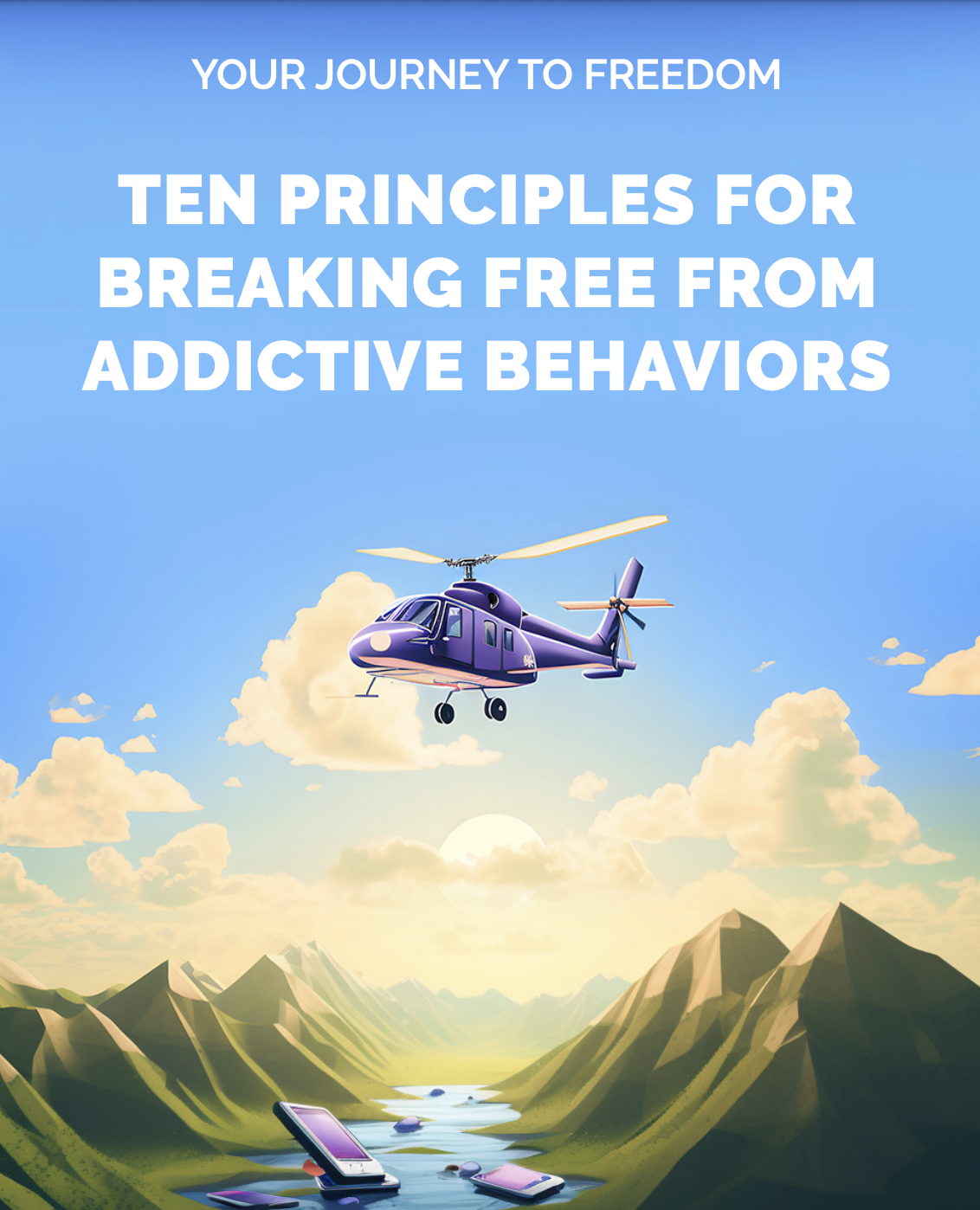As we find ourselves in the midst of Elul, a season dedicated to Cheshbon Hanefesh—or deep introspection—it’s an opportune time to focus on those bad habits or addictive behaviors that negatively impact our ruchniyus (spirituality) and overall well-being.
If you or someone you know is facing such challenges, this article aims to guide you. Based on a recently released FREE eBook by GuardYourEyes.com, and backed by the collective wisdom of successful GuardYourEyes members as well as scientific research.
This comprehensive guide is a roadmap to lasting freedom. Stick around until the end of the article, where you’ll find a link to download the full eBook for more info and resources on the following 10 ideas.
1. The 30-90 Formula: The Daily Ritual That Makes Freedom Unavoidable
The first step to breaking free is carving out a little “you time” each day working towards your goal. Consistency is key; a small but steady effort can lay the foundation for monumental change.
For the first 90 days of your journey to freedom, set aside 30 undisturbed minutes each day to focus solely on breaking free from your habit or addiction. During these 30 minutes, engage in specific activities like researching effective strategies, planning actionable steps, taking direct action toward your goal, journaling your thoughts and progress, or discussing your journey with a trusted friend.
2. The Power of Teamwork: Why Having a Support Buddy Makes a Difference
Let’s face it: going it alone is tough. That’s why having a support buddy can make all the difference in your journey to freedom. Think of this person as your personal cheerleader and reality-check rolled into one. They offer you a listening ear, emotional support, and honest feedback about your progress or where you might need to focus. This partnership creates a two-way street of wisdom and encouragement, making your journey feel like a team effort rather than a solo venture.
3. The Power of the Pen: Unlocking the Hidden Clarity Within You
Whether you’re working on kicking a bad habit or striving for a more significant change, the journey isn’t usually a straight line—it’s full of ups and downs. Keeping a journal serves as your personal roadmap, capturing your experiences, insights, and game plans.
Your journal is more than just a diary; it’s a tool for self-awareness. It helps you identify what sparks your unwanted behavior and gives you a clear overview of your progress. By jotting down your thoughts and actions, you transform abstract challenges into concrete tasks, making it easier to both celebrate your wins and understand your setbacks.

4. Shape Your Space: How Your Environment Can Be Your Best Ally
It’s no secret that our surroundings can either be an accomplice to our old habits or an ally in our journey toward change. Let’s put it in stark terms: Would you trust yourself to stick to a diet with a kitchen cabinet full of junk food? In the digital realm, the stakes are no different. If your challenge happens to be related to the internet, digital filters can serve as invaluable gatekeepers. They’re not a sign of weakness but a tool for empowerment, serving as a pause button that lets you reconsider your choices.
5. Unearth Your ‘Why’: The Hidden Fuel for Long-term Commitment
Change starts with understanding your core motivation—your ‘why.’ A clear and profound reason for embarking on the journey to freedom can act as your anchor when challenges arise. As Chazal say in Pirkei Avos (2:1), a deep-seated ‘why’ equips you with resilience and determination, offering more staying power than a fleeting desire.
Take time to reflect on the broader impacts quitting will have on your life. Consider how it will affect your spirituality, relationships, and overall well-being. A well-defined ‘why’ serves as your guiding light, helping you navigate through temptations and challenges.
6. The Change Blueprint: Why Improvising Isn’t Enough
Whether you’re tackling a bad habit or striving to overcome an addiction, building something meaningful takes planning. While the initial spark may get you started, a robust blueprint keeps you going. What are your concrete steps to bring about change? How will you handle moments that test your resolve? A well-crafted plan doesn’t just focus on what you’ll do right; it anticipates and prepares for the hurdles. Turning your aim from a vague aspiration into a structured, achievable objective is the key to success.
7. Your Craving Toolkit: Not-So-Common Strategies for Common Urges
Whether you’re trying to kick a bad habit or overcome an addiction, willpower alone usually isn’t enough. For those times when you’re tested, you’ll want a set of practical strategies ready to go.
Use methods like Distraction, Grounding, and Urge Surfing to help you when temptation strikes. Take the time to learn and practice these techniques until they become second nature. It’s okay to experiment and find the method that works best for you.
Equipped with this toolkit, your journey toward change can become more manageable and sustainable. Identify your key strategy and make it your ally.
8. The Long-Haul Perspective: Change Is a Marathon, Not a Sprint
Achieving meaningful change—whether it’s breaking a bad habit or overcoming addiction—isn’t about quick wins; it’s a long-term commitment that demands preparation, strategy, and resilience. Don’t expect to see instant transformation. The path often takes between 90 to 180 days, so don’t be disheartened by slips along the way. These are not failures, but lessons for refinement.
As you keep going, your brain begins the process of rewiring itself, gradually making it easier to steer clear of the behavior you’re trying to eliminate. Patience and perseverance are your allies on this journey.
9. The Joy Factor: Reclaiming the Joy that Bad Habits or Addictive Behaviors Took Away
Overcoming bad habits or addictive behaviors can often leave a void in your life, but filling that gap with meaningful activities can be transformative. Engaging in fulfilling pursuits not only distracts you but also counteracts the negative emotions that often drive addictive behaviors.
Think back to what made you happy before these issues took center stage. Create a list of those activities and start incorporating them back into your daily life. The aim isn’t self-indulgence but genuine enrichment that enhances your mental and physical well-being.
10. Decoding B.L.A.S.T.E.D: The Hidden Triggers You Never Knew
While bad habits or addictive behaviors may seem like the central problem, they’re often just the visible part of a deeper emotional iceberg. The acronym B.L.A.S.T.E.D. (Bored, Lonely, Angry, Stressed, Tired, Excited, Down) encapsulates the underlying emotions that often drive people to seek short-term relief in unhealthy ways.
Addressing these emotions with self-help strategies or therapy is key for lasting change.
———-
If you’re keen to apply these principles, download our FREE eBook at GuardYourEyes.com/ebook. The eBook provides actionable steps, real-world examples, and a list of additional resources to help you implement each principle effectively.
Click here for an Instant Download
Remember, you’re not navigating this maze of change alone. Begin your transformative journey today.
Note: Achieving long-term freedom may require professional guidance, especially in severe cases. Consult a qualified health professional for personalized advice.











